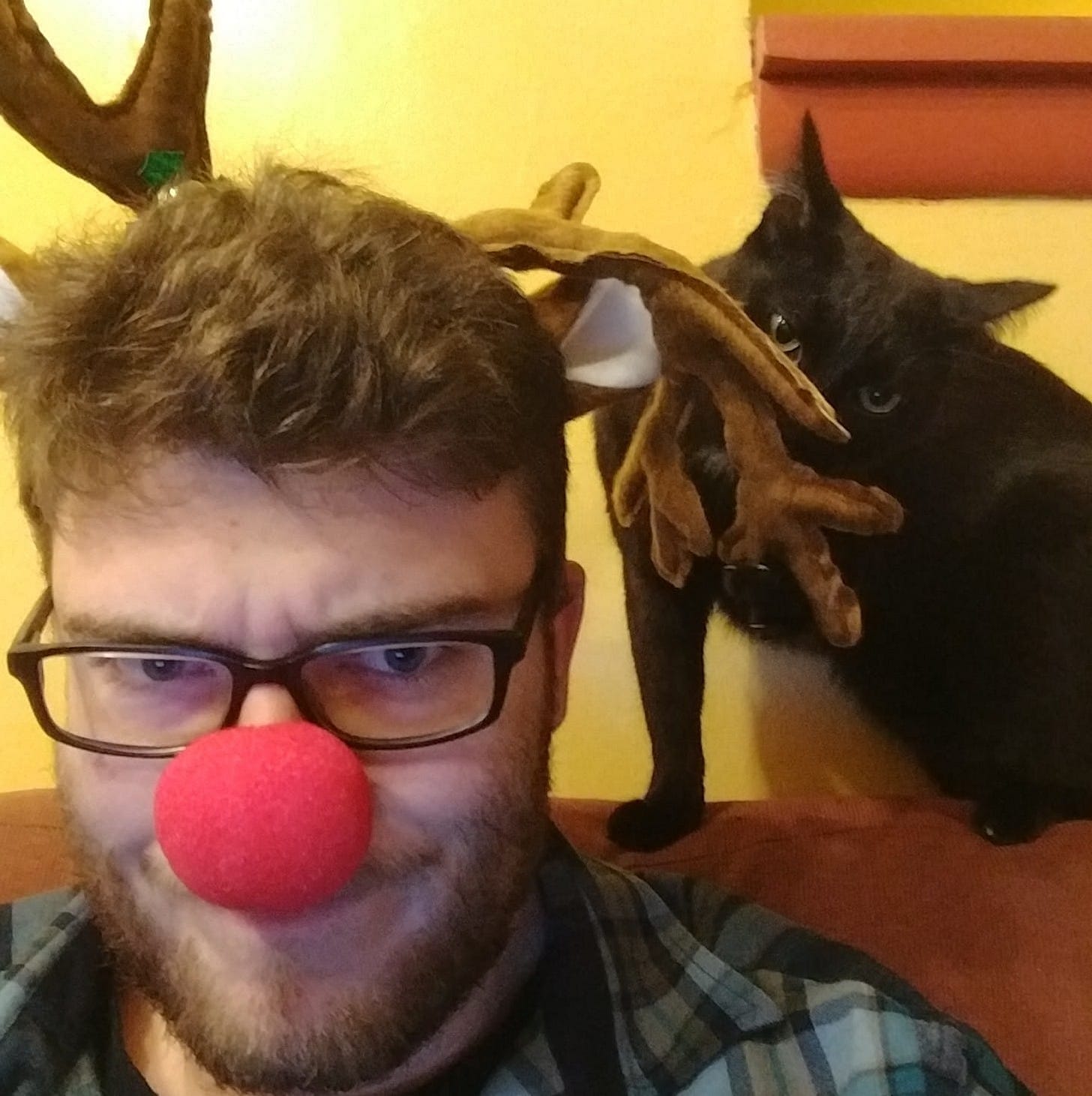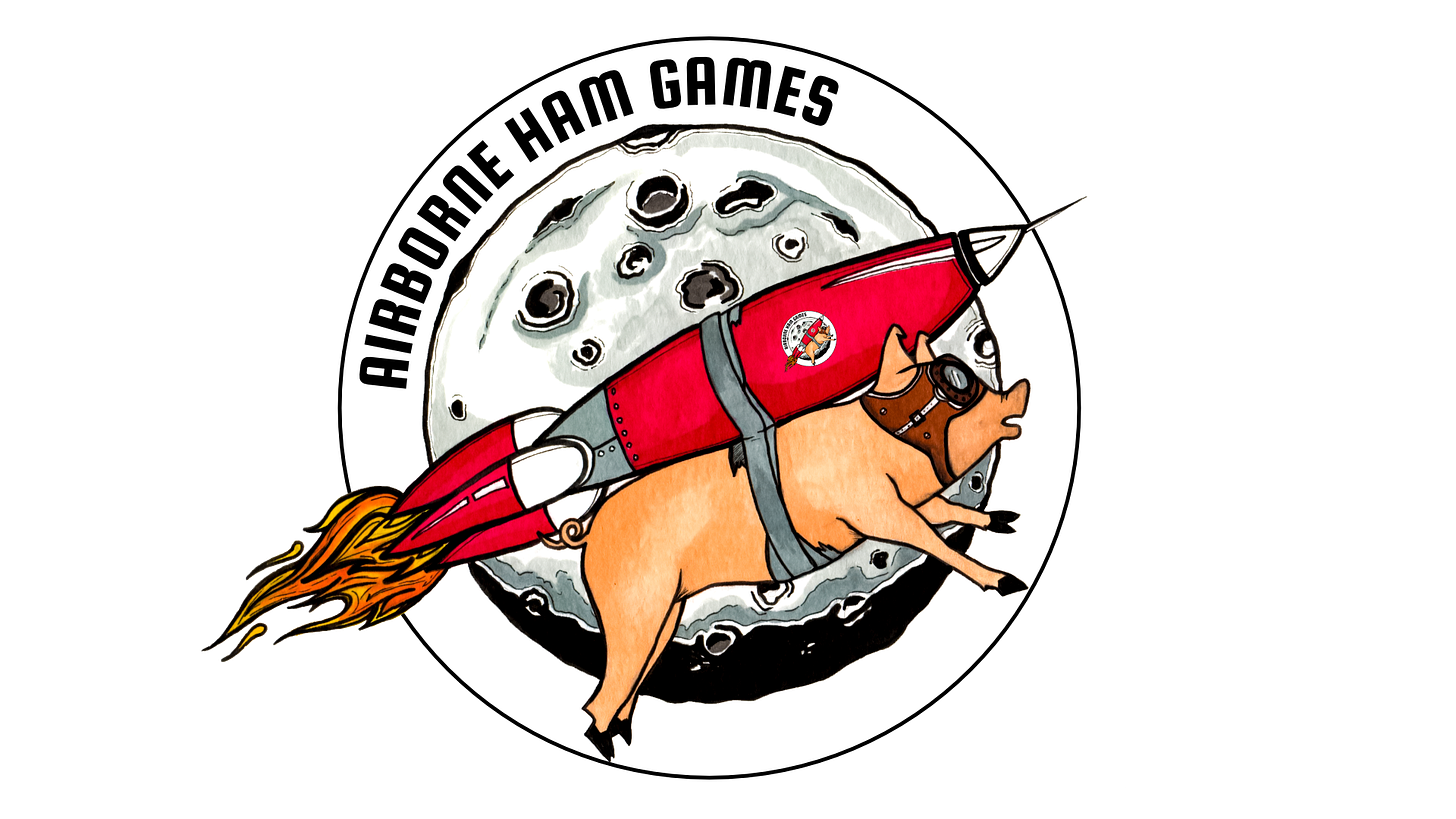Hey folks.
Welcome to the Game Lab.
Despite being a spry young Millennial (or crusty old Zoomer depending who you ask), I’ve never been too good at posting on social media or keeping up with news feeds. Having run LARPs for nearly a decade, I’ve done a lot of good and successful work in analog games, but don’t much to show for it but friends, memories, and boxes of props. Those are all great, but it turns out cheap leftover costuming isn’t very marketable.
With my first physical game printed and released in 2023, I’m finally changing that, and this post is the start of me putting something regularly out into the world that has permanence, that others can gain some insights or enjoyment from, and that allows me to gather my own thoughts and form new ideas in a way that engages with the games community online.
I’ve been meaning to start writing longer form posts to talk about game mechanics and theory I find interesting, share games or creators I discover, and keep a design log of the many games I’m always working on. Substack seems like a good place for me to do that in a format that’s more my speed, and as I’ve been writing the first few posts and putting my thoughts into words my mind has been swirling with exciting new topics and ideas to explore.
I’m thrilled to see where this takes me and I am happy to have you along for the ride.
Who am I? Why should you care?
That’s a really good question I’ve been convincing myself to answer for some time now, and I’ve finally got it figured out.
I’m Eric Faber, a game designer on the shores of Lake Superior. I’ve designed analog games for over a decade, primarily Live Action Role Playing Games, but dabbling in TTRPGs and board games as well. In 2016 I met one of my best friends who was running a LARP at the local college, and I fell into helping run it when he graduated and we moved it off campus.
Learning on LARPs.
We ran that game and grew the community around it for almost 3 years, designing a new game with unique mechanics, story, and characters from the ground up every month.
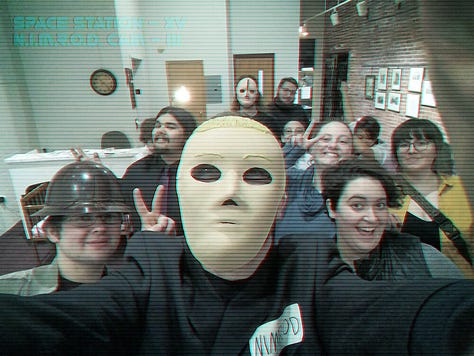
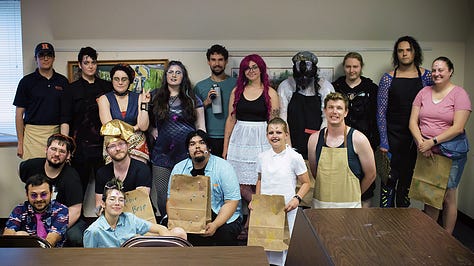
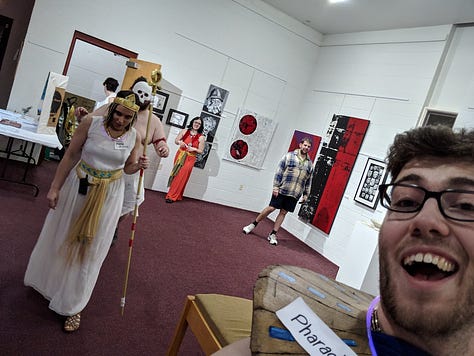
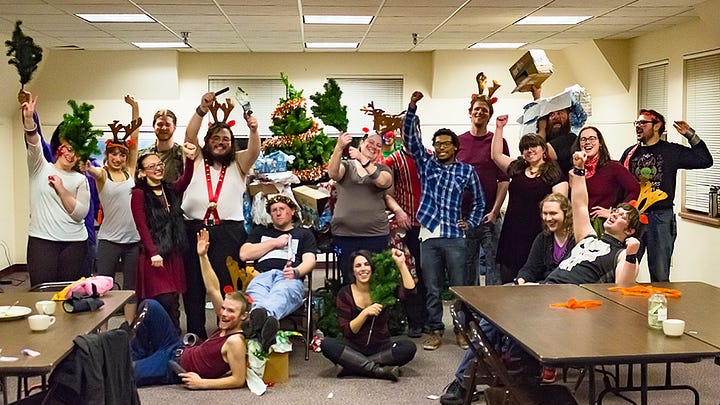
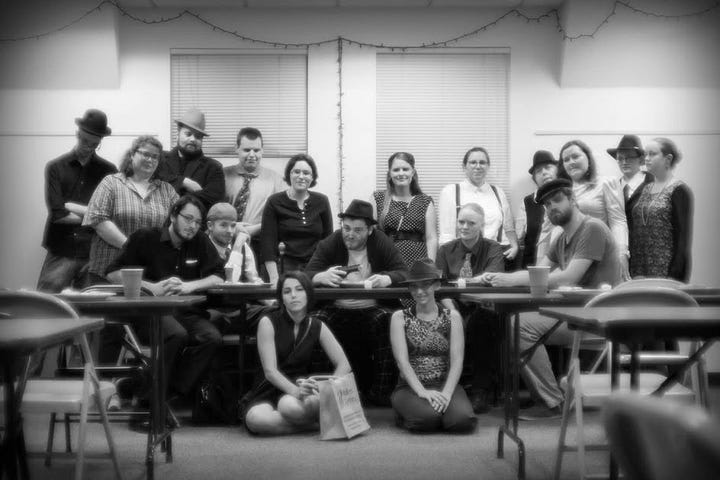
We were essentially live-playtesting a game for 20-30 players each month, which taught me a lot about iterative design. We molded the framework that was originally cobbled together by college kids from an online forum game into a solid and consistent ruleset. In doing so, we built a deep toolbox of mechanics that we could add or remove in order to craft the experience we wanted for any particular game.
From mummy curses that players had to discover how they were acquired and what they did, to cyberpunk gadgets with unique mechanics that could be freely exchanged to give players agency over what role they filled on a team, Haunted Mansion explored a wide spectrum of settings and experiences that kept the game from getting stale for returning players and forced us to continually push the boundaries of what we thought it could be.
Unfortunately, LARPs don’t leave behind any way for the people outside of that building on that night to see what we made. Each event is a singular experience that players and event runners get to share, which is both the beauty of the medium as well as one of its many obstacles.
Into the game industry and right back out.
Due to the fleeting nature of LARPs, I was designing board games and TTRPGs as well in hopes of one day publishing something and getting my work out into the world. In 2020 I had decided to get serious and try to pursue publishing a board game.
I planned trips to conventions, started researching the process of pitching to publishers, and then… well, we all stopped doing all that stuff for a while. A lot of my game design stuff went on hold during the pandemic. Our LARP stopped and without momentum the community dispersed. Life got hard for everybody.
But I’m back, for real this time.
When things reopened and we got back to in-person events, I got back to LARPing. A friend of mine runs the Wisconsin branch of the post-apocalyptic LARP Dystopia Rising and hoodwinked me into writing for and helping to run it. If you are in the US, chances are there’s a branch near you and I recommend checking it out if you like horror, boffer combat, zombies, or just a weekend away from real-life problems. If you’re in the Midwest, the WI game would love to have you. We have heated cabins.
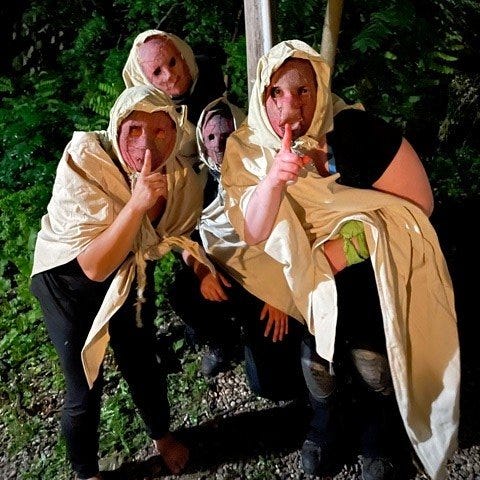
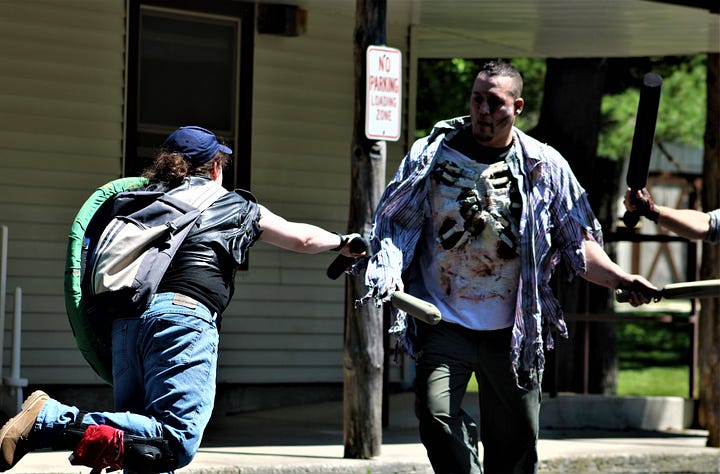
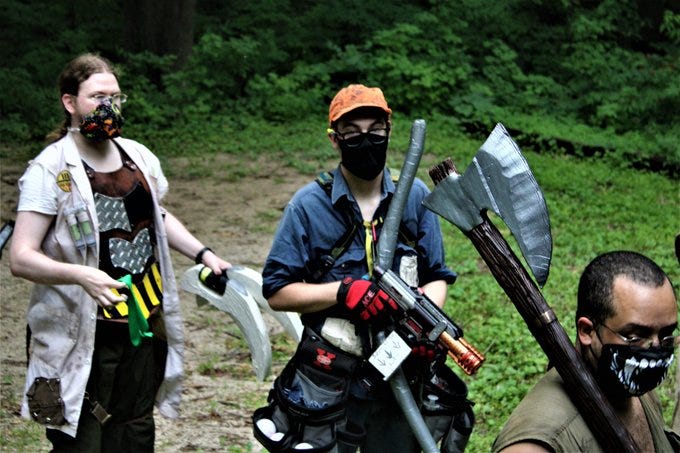
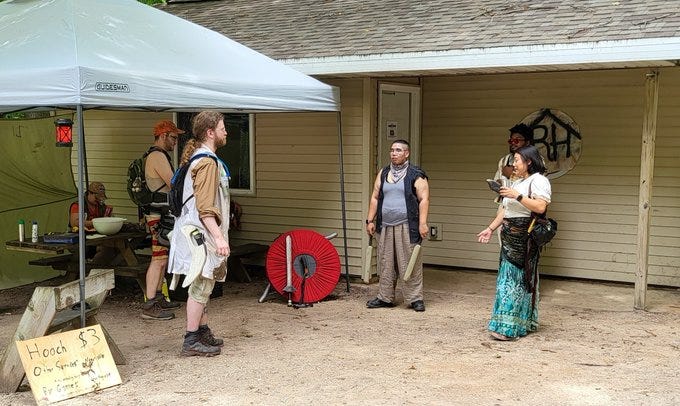
I also designed, wrote, and used Kickstarter to publish my first game, The Last Hand. It’s a play-to-lose horror storytelling game that uses a deck of playing cards with rules emulating Texas Hold ‘Em to create tales of survivors being pursued by an unknown horror which you learn about as you play. Inspired by games like Dread, Ten Candles, and Fiasco!, the structure of the game guides you towards an inescapable building of tension and cathartic release as you move from scene to scene on the run, facilitating a warranted distrust and obligatory cooperation that is a staple of the horror genre.
It’s quite good.
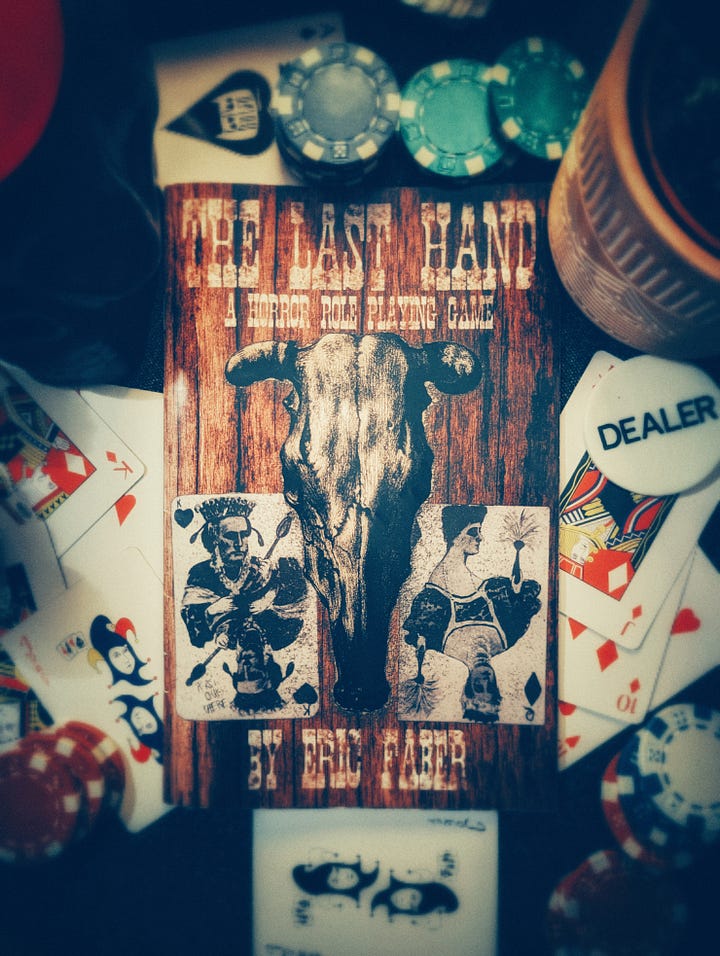
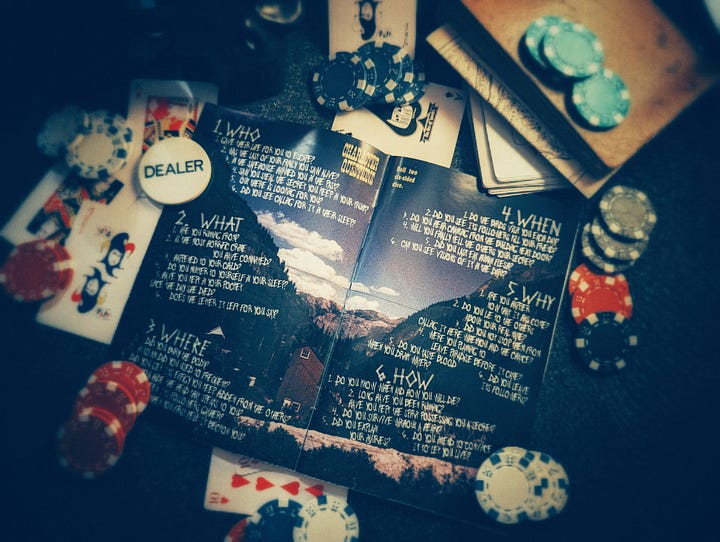
The Game Lab
I believe games are an art form that can be engaged with in the same way that our culture discusses films and literature. I love thinking about and talking about games, game design, and game mechanics, as I truly believe it helps us as players understand and find the fun in games and me as a designer find new ways to innovate in the medium.
In this newsletter, I’m going to explore the types of mechanics I think are interesting and why, games I play or that I am excited about, and parts of the craft of game design and decisions I make in prototypes I’m working on.
This is partly a design theory blog, partly a devlog, and partly a way for me to take the knowledge I have from years of designing games and put it out into the world in a way that helps both my creative process and hopefully yours as well.
So yeah, that’s the idea. Stick around and let’s talk about games.


